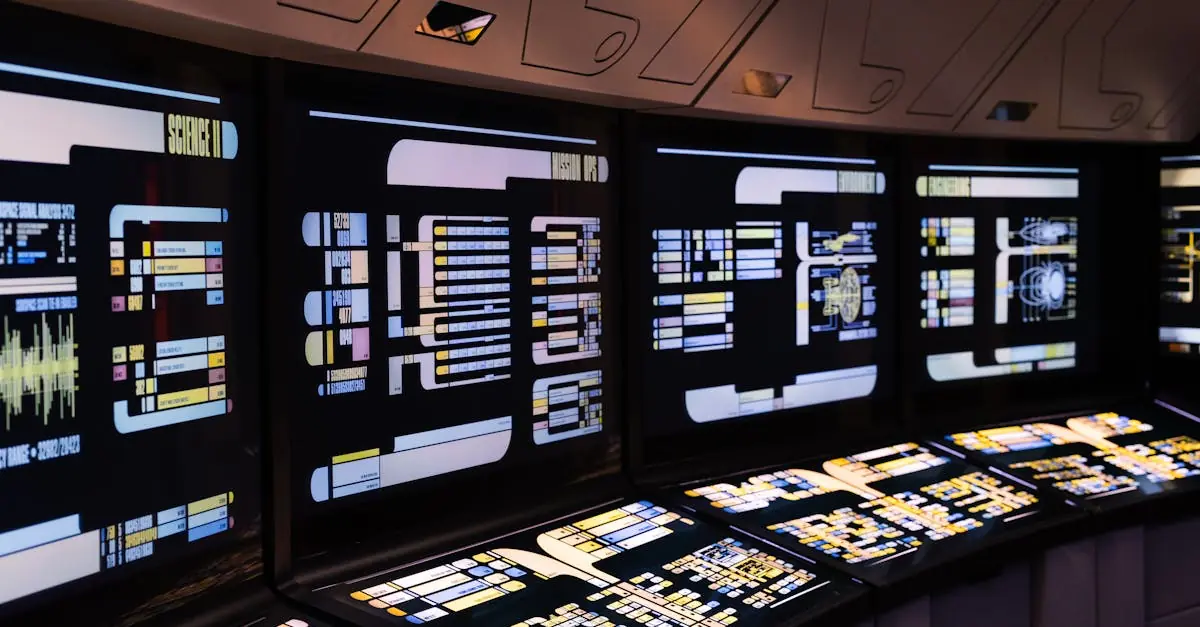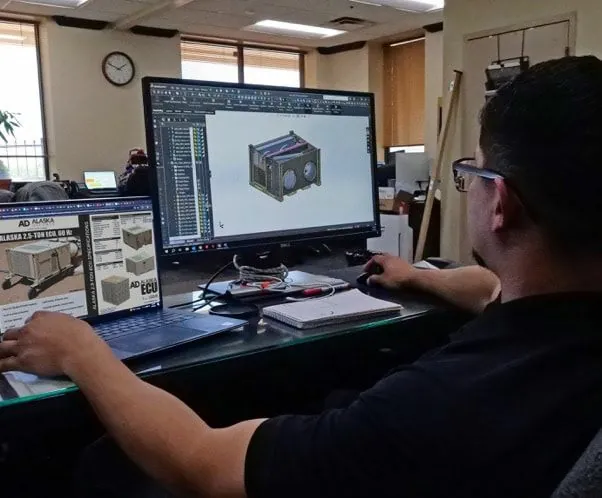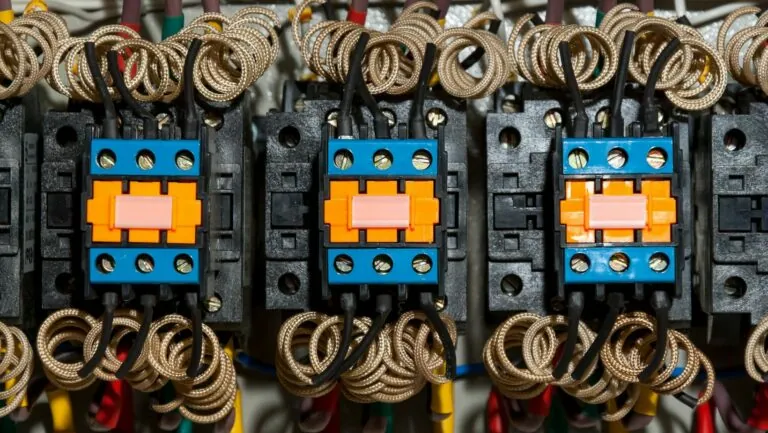In a universe filled with endless possibilities, space technology innovations are blasting off like a rocket on a caffeine high. From satellites that keep our GPS on point to rovers that explore distant planets, these advancements are not just for sci-fi fans anymore. They’re reshaping how we live, work, and even binge-watch our favorite shows.
Imagine a world where your morning coffee is brewed with water extracted from Martian soil. While that might sound like a plot twist from a space comedy, it’s closer to reality than you think. As companies and governments invest in groundbreaking technologies, the cosmos is becoming a playground for innovation. Buckle up, because the future of space tech is not just about reaching for the stars—it’s about bringing the universe to your doorstep.
Table of Contents
ToggleOverview Of Space Technology Innovations
Technological advancements in space are evolving rapidly. Innovations such as satellites and mars rovers revolutionize communication and exploration. For instance, satellites enhance global communication, navigational accuracy, and weather monitoring. Rovers like Curiosity and Perseverance conduct in-situ investigations of Mars, analyzing soil and atmosphere for signs of life.
Moreover, space agencies utilize reusable rockets to reduce costs significantly. SpaceX’s Falcon 9 exemplifies this innovation. Its successful landings and reusability lower mission expenses, making access to space more affordable.
Artificial intelligence plays a crucial role in these innovations. AI systems analyze vast amounts of data collected from outer space missions. This analysis assists in identifying patterns, enhancing navigation, and managing resources effectively.
3D printing in space holds promise for future exploration. This technology allows astronauts to manufacture tools and components on-demand. By reducing dependence on Earth for supplies, the potential for long-duration missions increases.
Global collaborations foster innovation in space technology. The International Space Station serves as a prime example of international cooperation. Scientists from various countries work together to conduct experiments that further human understanding of space.
Incorporating green technologies within space missions highlights sustainability efforts. Solar panels now power many spacecraft, minimizing the carbon footprint of launches. Such innovations contribute to the goal of sustaining life on Earth and beyond.
Space tourism represents the latest frontier of innovation. Companies like Blue Origin and Virgin Galactic are pioneering commercial flights for civilians. This initiative aims to make space travel accessible to a broader audience, reshaping the perception of space exploration.
Overall, space technology innovations are crucial for the future, improving daily life and expanding human presence beyond Earth.
Key Innovations In Launch Systems
Innovations in launch systems dramatically transform access to space. They focus on increasing efficiency and reducing costs.
Reusable Rocket Technology
Reusable rocket technology significantly cuts launch expenses. SpaceX’s Falcon 9 exemplifies this trend, with its ability to land back on Earth after missions. Reuse of rocket stages reduces the need for building new rockets, which saves resources and promotes sustainability. Several successful landings have illustrated the potential for reusability in space missions. This technology opens doors to more frequent launches, facilitating a broader range of activities in orbit. Other companies, like Blue Origin, are also pursuing similar developments, reinforcing the importance of reusability in future space operations.
Space Elevators
Building space elevators offers a visionary approach to reaching orbit. By enabling transportation of payloads directly into space at lower costs, this concept could revolutionize launch systems. Using tensile strength materials like carbon nanotubes makes this idea feasible. Engineers envision a structure extending from Earth’s surface to geostationary orbit, utilizing counterweights to maintain stability. Projected construction costs for a space elevator could be significantly less than traditional launch systems. Although advancements are still needed, research into this technology could change how humanity accesses the cosmos forever.
Advancements In Satellite Technology
Advancements in satellite technology contribute significantly to various sectors, enhancing capabilities and performance.
Miniaturization Of Satellites
Miniaturization transforms satellite design, enabling smaller and lighter satellites, often called nanosatellites. These devices typically weigh less than 10 kilograms. Increased accessibility fosters innovative applications in earth observation and communication. Lower launch costs result from compact size, allowing multiple satellites to be deployed simultaneously. Examples include Planet Labs’ Doves, which capture daily imagery of the Earth. Enhanced technology also supports universities and startups in developing and deploying satellites. This democratization of space benefits scientific research and commercial enterprises alike.
Enhanced Communication Capabilities
Enhanced communication capabilities redefine global connectivity, allowing seamless data transmission across vast distances. New satellite constellations, like SpaceX’s Starlink, provide high-speed internet in both urban and rural areas. Innovations in frequency bands and signal processing improve reliability and bandwidth. Multi-satellite networks ensure coverage even in remote regions. Increased communication enhances disaster response efforts, enabling quicker information sharing during emergencies. Real-time data from satellites facilitates global collaboration in various fields. Overall, these advancements foster a more interconnected and informed world.
Progress In Space Exploration
Space exploration has seen remarkable progress through both robotic missions and advancements in human spaceflight technologies.
Robotic Missions
Robotic missions contribute significantly to our understanding of the cosmos. NASA’s Perseverance rover explores Martian terrain, searching for signs of ancient life and collecting rock samples. Meanwhile, the Hubble Space Telescope continues to unveil the mysteries of distant galaxies, providing invaluable data on cosmic phenomena. Space agencies worldwide engage in collaborative robotic missions, enhancing knowledge through shared discoveries. Innovative technologies, like autonomous navigation systems, enable spacecraft to operate with minimal human intervention. These advances not only yield scientific insights but also pave the way for future human exploration.
Human Spaceflight Technologies
Human spaceflight technologies evolve rapidly, enhancing safety and comfort for astronauts. The Orion spacecraft, developed by NASA, represents a leap forward in crewed exploration of deep space. Enhanced life support systems ensure sustainability during long-duration missions. Furthermore, the development of advanced spacesuits increases mobility and protection against harsh environments. SpaceX’s Crew Dragon has revolutionized crew transport, making it more efficient and affordable. Innovations in launch systems also facilitate faster access to low Earth orbit, expanding opportunities for space tourism and research. These advancements reflect a commitment to making space exploration a reality for more individuals.
The Role Of Artificial Intelligence In Space Technology
Artificial intelligence plays a pivotal role in shaping modern space technology. It enhances data analysis from missions like NASA’s Perseverance rover, providing insights that improve navigation strategies. Machine learning algorithms process vast amounts of information collected from various sources, enabling quicker decision-making during missions.
Spacecraft utilize AI for automated systems management, which increases reliability during critical operations. Rovers navigate challenging terrains autonomously by identifying obstacles in real time. AI-driven systems also manage resources onboard spacecraft, optimizing power consumption and ensuring efficiency throughout long-duration missions.
Additionally, predictive analytics derived from AI helps scientists understand potential landing sites on Mars with greater accuracy. By analyzing geological data, AI can identify areas most likely to contain signs of past or present life, aiding the search for extraterrestrial organisms.
Collaboration between AI and human expertise fosters innovative solutions to complex problems. Teams can leverage AI’s capabilities to simulate various mission scenarios, improving mission planning processes. Creatively combining AI and human insight drives new approaches to resource management in space.
The use of AI in satellite technology amplifies communication and data transmission capabilities. AI algorithms enhance predictive maintenance, which reduces downtime for satellites. As the effectiveness of AI systems continues to improve, reliance on these technologies transforms how missions are conceived and executed.
AI’s contributions extend beyond missions, assisting in the analysis of Earth observation data. Insights generated from this analysis inform environmental monitoring and disaster response efforts. Overall, the integration of artificial intelligence into space technology accelerates advancements, elevating human understanding of the cosmos.
Conclusion
The landscape of space technology is evolving at an unprecedented pace. Innovations are not only enhancing the way humanity interacts with the cosmos but are also making significant impacts on daily life. As advancements continue to unfold, they promise to bridge the gap between Earth and space, making exploration and resource utilization more attainable.
The collaborative efforts across nations and industries are paving the way for a future where space is accessible to all. With emerging technologies like AI and 3D printing, the possibilities seem limitless. As humanity stands on the brink of a new era in space exploration, the potential to transform everyday experiences through these innovations is both exciting and inspiring.







